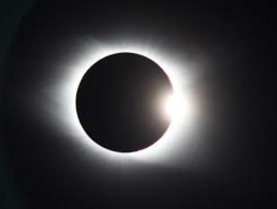Did the Solar Eclipse Shadow Viewer’s Better Judgement?

August 21st solar eclipse
On August 21, 2017 many parts of North and South America, Europe, and Africa were treated to the celestial event of the decade. For the first time since February 1979, a total solar eclipse was visible in most parts of the world. Residents in the path of totality, including the states of Oregon, Idaho, Wyoming, Montana, Nebraska, Iowa, Kansas, Missouri, Illinois, Kentucky, Tennessee, Georgia, and North and South Carolina, witnessed the total solar eclipse as the moon completely blocked the sun (NASA). However, even though the moon dulled the sun’s brightness and made it easier to look at, it also made it easier for the sun to damage our eyes. Prior to the event, NASA released warnings that people should only view the eclipse through special glasses that they could order online, or by using a method called pinhole projection. Permanent damage to the retina and other irritating symptoms such as teary eyes, red eyes, and extreme sensitivity to light (NEWSW).
Even though NASA did its best to prepare the world for the event, hospitals across the United States saw many eclipse related injuries. There were twisted and sprained ankles, sprained wrists, and lacerations on eclipse viewers who failed to watch where they were going with the dark glasses on (KRCRTV) . However, the most shocking injuries were reported from hospitals in California and Virginia. In an attempt to protect their eyes, about a dozen people had put sunscreen in their eyes. These patients were referred to ophthalmologists and will be treated for a full recovery (USAT). If they had had proper eye protection they would have witnessed a “really cool moment” as Madison High School student Ryan Selquist did with his NASA approved glasses. When the next total eclipse comes around in 2023 make sure to order eclipse glasses in advance and don’t try to put sunscreen in your eyes!
